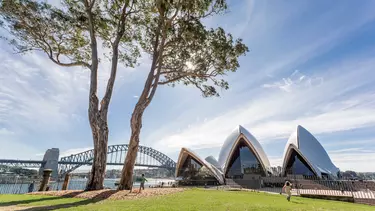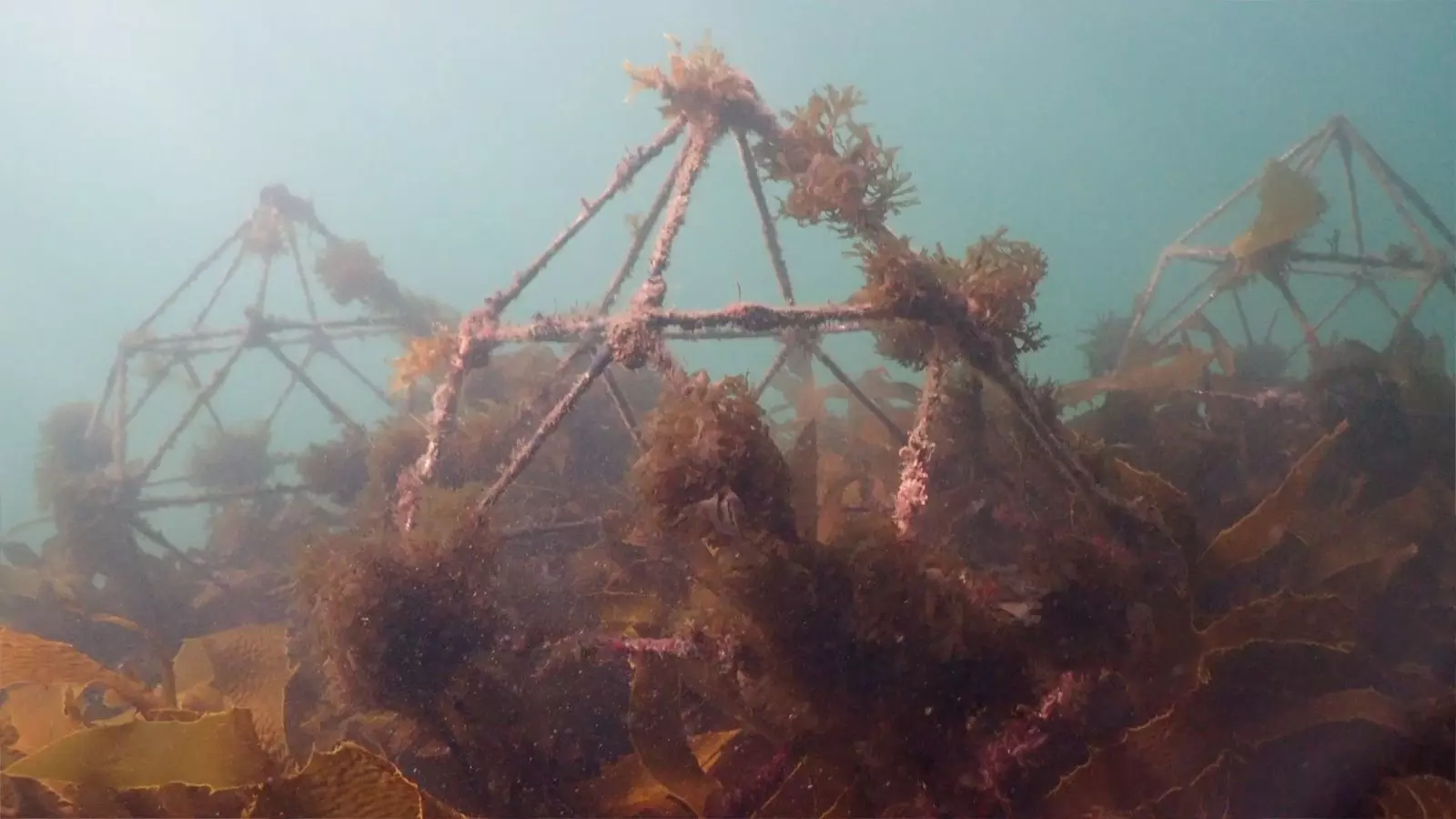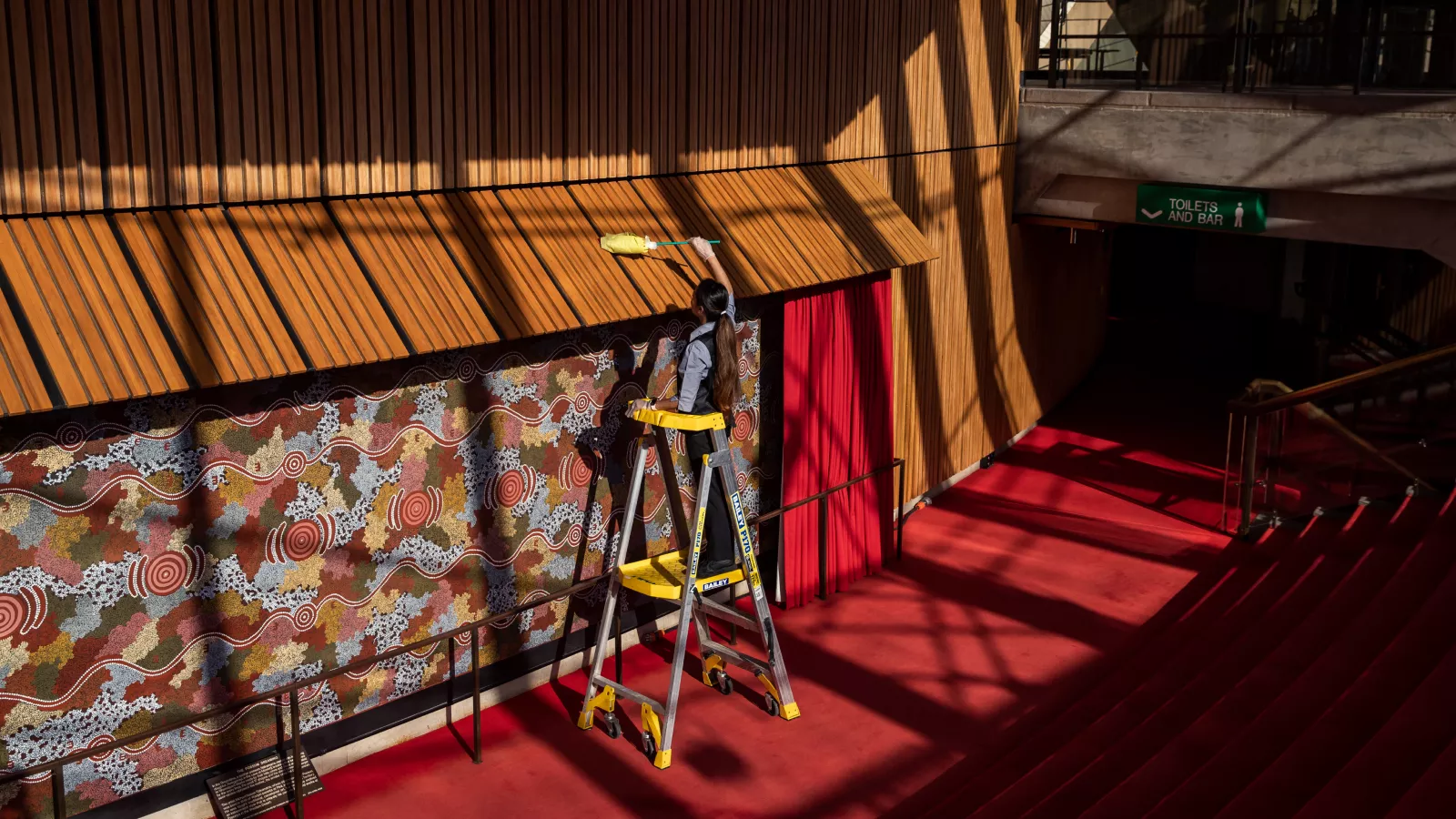Sustainability
Sustainability is in our DNA. We have embedded social and environmental sustainability measures aligned with the Global Goals into our organisation-wide planning.
The Opera House’s architect, Jørn Utzon, incorporated sustainable design elements such as a seawater-cooling system into the building which opened in 1973. The Environmental Sustainability Plan 2020-2023 builds on that legacy.
Serving reusable cups during Vivid LIVE
At the Sydney Opera House, we believe that creativity can help build a better world. This includes embedding social & environmental sustainability into all aspects of our delivery of Vivid LIVE, guided by our 10 Principles for Sustainable Event Management. We’re taking action to build the world we want to see as part of our commitment to the UN Global Goals.
When you attend Vivid LIVE this year, you can help us to build a better future by using and returning our reusable cups on selected drinks at the Joan Sutherland Theatre and Western Foyers theatre bars. Finished your drink? Take your cup back to the bar to purchase another drink to enjoy during the show. At the end of the night, either drop the reusable cup back to the bar or leave it in the foyer, we’ll make sure the cups are collected, washed and reused again.
Help us to achieve our goal of replacing single use plastic on-site by using reusable cups. This initiative is proudly supported by our Global Goals Partners.

Our latest Environmental Action Plan and the Global Goals
The Sydney Opera House has committed to the United Nations Sustainable Development Goals, which provide a roadmap to address the world’s most pressing challenges by 2030, including climate change, inequality and education. This commitment is reflected in our fourth Environmental Action Plan (2020-23), which supports global efforts to safeguard our natural environment – and sets out a number of ambitious targets:
- Achieve a 6 Star Green Star Performance Rating from the GBCA;
- Eliminate single-use plastic packaging from all venues and restaurants;
- Take steps to become climate positive; and
- Achieve compliance to the International Standard for Sustainable Event Management (ISO20121).
As a source of inspiration, the Opera House aims to be a leader in environmental and social sustainability.
Achievement of GBCA 6 Star Green Star rating
The Sydney Opera House has been awarded a 6-star Green Star performance rating by the Green Building Council of Australia (GBCA), representing world leadership in environmental and social sustainability operations. Key sustainability achievements include reducing emissions by 26%, moving to 100% renewable energy and diverting over 90% of event waste from landfill. The implementation of new energy and water-saving technology, including innovations from Honeywell Building Technologies, has helped the Opera House achieve these significant milestones.
Maintaining carbon neutral certification is a requirement for a 6-star Green Star Rating. Find out more in our Public Disclosure Statement.
Artificial reef installed on Bennelong Point
After first announcing the project in 2017, a series of modular artificial reefs have now been installed alongside the Opera House sea wall. The pioneering project, led by UTS Professor of Marine Ecology David Booth and funded through a NSW Government Environmental Trust Restoration & Rehabilitation grant, aims to explore new ways to increase marine biodiversity and support native species in Sydney Harbour.
The artificial reef is made up of eight pods containing three hexagonal-shaped units placed underwater around Bennelong Point. Created by Reef Design Lab, the pods are constructed from marine-grade steel and concrete and feature elements of 3D printed design.
The structures have become encrusted with seaweed and sea life, providing a home for smaller fish species. In 2022, we made the special discovery of an endangered species, White’s Seahorse, in the reef. It’s rare to see seahorses in this part of the harbour as their natural habitats are relatively scarce.
This project has been assisted by the New South Wales Government through its Environmental Trust
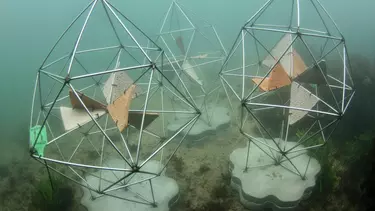
Renewable Power Purchase Agreement (PPA) signed
The Opera House has signed an industry-leading Power Purchase Agreement (PPA) with energy retailer Flow Power to invest its annual $2.4 million electricity spend in sourcing power from renewable power projects – a total investment of more than $16 million.
Under the industry-leading agreement, more than 85% of the Opera House’s yearly energy consumption of 16 gigawatt hours (equivalent to 2,500 households) will be matched with available supply from NSW wind and solar projects including Sapphire Wind Farm in Glenn Innes and the Bomen Solar Farm in Wagga Wagga.
Greening when cleaning the House
Staff from Sydney Opera House’s Building & Development team present projects which have been implemented to reduce our energy consumption. Projects covered include the air conditioning system utilising sea water, changing building management and control systems, and heritage sensitive energy efficient lighting for theatres and stage lighting.
More information
Environmental Action Plan 2020-2022
Inspired by nature, architect Jørn Utzon conceived a building ahead of its time, inherently sustainable by design. Almost five decades on, the Opera House has set a new standard in sustainable heritage buildings and we remain committed to inspiring greater environmental awareness across the community.
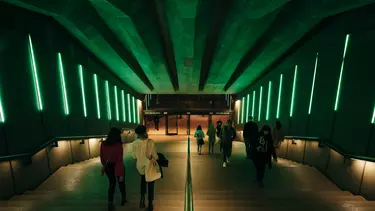
Environmental Sustainability Policy
Our Environmental Sustainability Policy outlines our ongoing commitment to environmental sustainability.
